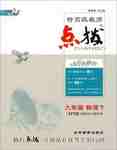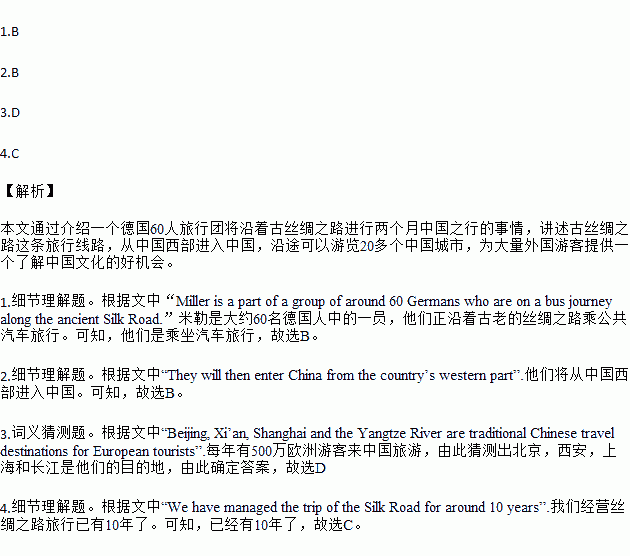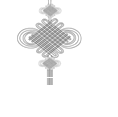题目内容
For Miller, an 80-year-old man, it’s a chance of a lifetime. Miller is a part of a group of around 60 Germans who are on a bus journey along the ancient Silk Road.
About this journey, he says: “I have been deeply interested in the Silk Road since I was a child. But now I finally have a chance to experience it.”
The two-month bus journey will take the group through Germany, Russia and other 4 European countries. They will then enter China from the country’s western part. It will be an unforgettable memory for them.
Nearly half of the 13,000-kilometre trip will be inside China. From Xinjiang in the west to Shanghai in the east, the German visitors will see more than 20 Chinese cities. “We have managed the trip of the Silk Road for around 10 years. An increasing number of people, not only from German-speaking countries, have been joining us,” says Liu Guoqiang from China Tours.
Almost 26 million foreigners travelled to China in 2015, and about 5 million of them were from Europe. Beijing, Xi’an, Shanghai and the Yangtze River are traditional Chinese travel destinations for European tourists. Speaking of where he wants to go, Miller says: “Compared with modern cities, the culture in western China attracts me more.”
As Shi Xiang, head of China Tours says “Being a new brand to attract foreign visitors, the Silk Road is good for people to know more about China, especially the north-western part of the country.”
1.How will the group of around 60 Germans have the tour?
A.By plane. B.By bus. C.On foot. D.By train.
2.Where will the German group enter China?
A.From Beijing. B.From the western part of China.
C.From the eastern part of China. D.From Shanghai.
3.The underlined word “destinations” in the fifth paragraph means “ ” in Chinese.
A.标志 B.道路 C.品牌 D.目的地
4.According to the passage, how long has China Tours managed the trip?
A.For 20 years. B.For 5 years. C.For 10 years. D.For 26 months.
 特高级教师点拨系列答案
特高级教师点拨系列答案书面表达
寒假即将来临,假设你是Tom,请根据表格的内容用英语给21世纪报写一篇的今年寒假的生活打算,顺便描述一下去年的寒假的安排及感想。
时间 | 活动 | 感想 |
去年 | 做作业,上网,偶尔看电影 | 待在家里很无聊 |
今年 | 去三亚旅行, | ...... |
注意:1.文章必须包括表格中的全部内容,可适当增加细节,展开合理的想象:
2.文章开头已给出,不计入总词数,只需接着写
3.至少补充一项今年的活动,并写一至两条感想
4 词数 70左右
Winter vacation is coming .But I still remember my last winter vacation .
_____________________________________________________________________


